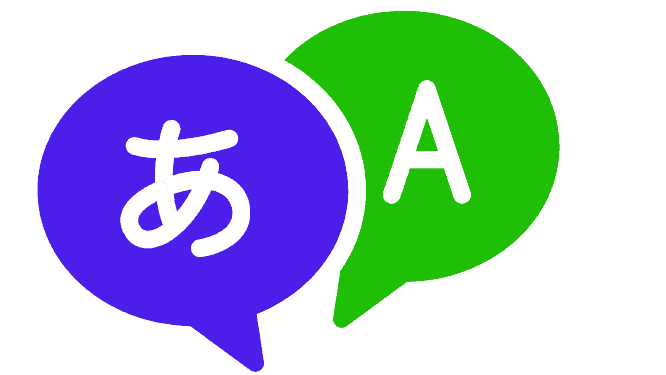Over time, language learning apps have grown in popularity. They provide a practical and approachable method to learn a new language. With the convenience of a smartphone or tablet, these applications provide a range of functions, including vocabulary lists, grammar drills, and language practice games. Though they may be a beneficial tool for learners, these apps can have certain drawbacks. In this article, we will discuss some of the disadvantages of language learning apps. We’ll explain why these limitations exist, how they affect learning a language, and how learners can overcome them when learning.

What are the Challenges of Language Learning Apps?
| Cons of Language Learning Apps |
|---|
| Lack of human interaction. |
| Limited speaking practice. |
| Inaccurate pronunciation. |
| Over-reliance on translation tools. |
| Incomplete understanding of grammar and context. |
| No feedback. |
| Language learning apps may not make you fluent. |
| Distractions. |
| Less opportunity to ask questions. |
| No or less interaction with native speakers. |
1. Lack of human interaction
The lack of human connection is among the main drawbacks of language learning applications. Learning a language requires more than simply memorization of vocabulary words and grammatical rules. Interaction with others is essential for the study of languages. It enables speakers and listeners to hone their communication skills. You get feedback on their intonation and pronunciation, and gain a deeper understanding of the context and culture of the language they are learning.
Speech recognition and chatbots in language learning applications can’t substitute native speakers or professional language instructors. Students may also lose out on practicing their communication skills in official and unofficial environments and being exposed to regional dialects and accents.
Apps cannot give the emotional and social advantages of learning a language. Although it may sometimes be difficult and stressful, learning a new language can be a rewarding and pleasurable experience. Linguistic friends and instructors may give emotional support and motivation that apps can’t match.
2. Limited speaking practice

The lack of speaking practice is another limitation of language applications. Applications with voice recognition and speaking exercises cannot substitute real-life discussions and native speaker exchanges.
Learning a language is a skill that requires both comprehension and context-based language use. Speaking is a crucial component of learning a new language because it allows students to put what they have learned into practice, work on their pronunciation, and enhance their listening abilities.
Reading and writing tasks are commonly prioritized above speaking exercises in app-based language learning. This might hamper the improvement of speech. Even when speaking exercises are offered, they are generally confined to brief sentences or planned discussions. This do not match real-life encounters.
3. Inaccurate pronunciation

Despite recent advancements, voice recognition technology is still far from flawless. Language learners who use just language learning apps may pick up undesirable habits or improper pronunciation that are hard to fix.
A learner’s inability to communicate effectively with native speakers is hindered by incorrect pronunciation. This can be a significant barrier to language learning. Apps for learning a language may also use text-to-speech technology to say words and sentences. Using this in excess can lack the details and differences of real speech.
Additionally, some language-learning applications could not provide users enough instruction in tone and pronunciation. These abilities are crucial for learning a language because they have a big influence on how well a learner can comprehend and be understood in everyday situations.
4. Over-reliance on translation tools
To help learners grasp unfamiliar words and phrases, language apps commonly contain translation features. Translation may help language learners, but overusing it might impede their progress.
Overuse of translation technologies may impair learners’ vocabulary and grammar growth and prevent them from thinking in the target language. Translations do not always accurately convey the whole content or meaning of a word or phrase, thus learners could also lose out on the cultural background and subtleties of the language they are learning.
Additionally, some language learning applications could not expose students to adequate real-world language usage. Language learners could depend too much on the app’s language, which might not accurately represent the language they will use when interacting with native speakers.
5. Incomplete understanding of grammar and context

Here comes the fifth issue in language learning. Grammar exercises and explanations in language learning apps can’t substitute a thorough comprehension of grammar and context. Language is a complicated system of communication that incorporates comprehension of the context, culture, and subtleties of the language; it is not merely a collection of rules and structures.
Apps for learning languages may not expose students to the background and culture of the language they are studying adequately. The subtleties of the language that learners could overlook might affect their capacity to interact successfully in everyday situations.
Grammar principles and structures may not be explained well in these apps. Grammar may become superficially understood by learners, which can result in grammatical errors and inaccuracies in language usage.
6. No feedback
The lack of feedback from real professors or language partners is one of the biggest drawbacks of language learning applications. Feedback is crucial for learning a language because it helps students pinpoint their areas of weakness, fix their errors, and develop confidence in their language skills.
Language learning applications may give automatic feedback on grammar and vocabulary exercises, but it may not be enough to meet a learner’s individual requirements and issues. Learners could lose out on receiving individualized feedback on their general language usage, pronunciation, and intonation.
Furthermore, without feedback, students would not be able to monitor their development and create practical objectives for their language learning journey. Human instructors or language partners also inspire language learners.
7. It can’t make you fluent
Apps for learning languages could not expose students to real-world language usage and context in sufficient amounts for them to become proficient. Learners could only have a cursory knowledge of the language and have trouble expressing themselves well in everyday conversations.
Additionally, language learners might lack access to chances to practice their language skills in real-life situations. Being fluent in a language involves consistent practice and communication with native speakers. Getting this is difficult to learn via apps alone.
8. Distraction
The risk of distraction is one of the biggest con with language learning applications. These apps are typically fun and interesting, but this may backfire. Although it could make learning a language more pleasurable, this can also be distracting and cause users to stay on the app longer/shorter than they expected.
Additionally, it’s possible that language learners won’t get the framework and guidance they need. Lack of this make it hard to maintain their motivation and attention. The app’s quantity of content and activities may overwhelm learners. This might cause them to lose concentration and sense of direction.
A loss of independence and self-motivation in language learning may result from learners being too dependent on language applications. While they could provide users a quick fix, they might not teach them the skills needed to keep learning and honing their language skills on their own.
9. Less opportunity to ask questions

The lack of individualized guidance and help is one of the biggest disadvantages of language learning applications. They don’t provide a mechanism for learners to ask questions and get individualized help when they run into problems or have queries about specific language subjects.
While some language applications could include forums or chat groups where users can engage with language experts or other learners, the help might not always be prompt or tailored to the learner’s needs. A learner’s capacity to advance in their language learning journey is impacted if they lose the chance to get rapid feedback or clarification on language concepts.
Additionally, language learning applications may not be able to cater to the particular learning requirements and preferences of different students. A regular app may not be able to provide the strategy or degree of help that certain learners demand.
10. No or less interaction with native speakers
Language learning applications can provide users access to a multitude of language learning materials. But, they might not give them the chance to connect with native speakers. For language learners to advance their abilities and comprehend the context, culture, and subtleties of the target language, interaction with native speakers is crucial.
Some language learning applications include chatbots or virtual conversation partners, however the interaction may not resemble real-life language usage. Without real-life dialogue, learners may fail to apply their language abilities.
Further, many dialects and accents that exist within a language could not be introduced to learners using learning apps. To improve their hearing and comprehension abilities and comprehend the richness of the language, learners must be exposed to a variety of dialects and accents.
Conclusion | Drawbacks of language learning apps
In conclusion, although there are numerous advantages to using language learning applications, including price, accessibility, and convenience, there are also a number of drawbacks that users should be aware of. These include the absence of face-to-face communication, insufficient speaking practice, poor pronunciation, excessive reliance on translation software, incomplete comprehension of grammar and context, lack of feedback, inability to speak fluently, risk of distraction, and fewer opportunities to interact with native speakers and ask questions.
It’s crucial to keep in mind that language learning apps are only one tool in a learner’s toolbox and shouldn’t be depended upon as the only method of learning a new language. Learners should look for chances to practice speaking and listening with native speakers. They can participate in immersive language learning activities, and request individualized guidance and feedback from language instructors or tutors in order to enhance their language learning accomplishment.
In the end, learners can choose the language learning resources to utilize and how to complement their language learning journey to meet their language learning objectives by knowing the benefits and limits of language learning apps.
FAQs
The absence of human connection is one of the biggest drawbacks of language learning applications. Apps may include interactive elements, but they cannot replace the advantages of speaking to native speakers face-to-face.
While language learning apps may be a helpful tool for language learners, they cannot replace the need of speaking with native speakers for practice, which is crucial for achieving fluency.
While some applications could let you practice your pronunciation, they might not provide you honest feedback or be able to spot and fix small pronunciation issues.
You can seek out chances to practice speaking and listening with native speakers, participate in immersive language learning activities, and request individualized guidance and feedback from language instructors or tutors to augment your language learning journey.
No, all applications for learning languages are not made equal. Some may be more suited to certain learning methods or linguistic objectives, while others may provide more interactive elements or higher-quality material. Before selecting an app to use, it’s crucial to do some research and evaluate the available options.
Although they may be a helpful addition to conventional language classes or courses, language learning apps cannot replace the value of in-person teaching and tailored feedback from a language instructor or tutor.

Meet Bill, a French language teacher and blogger who specializes in testing various language learning apps. He has been teaching French for nearly 4 decades and holds a Bachelor’s degree from Manhattanville College. With a passion for technology and how it can enhance language learning, Bill has spent years testing and reviewing different language learning platforms. His blog provides valuable insights into the pros and cons of each app, as well as tips for language learners of all levels.
